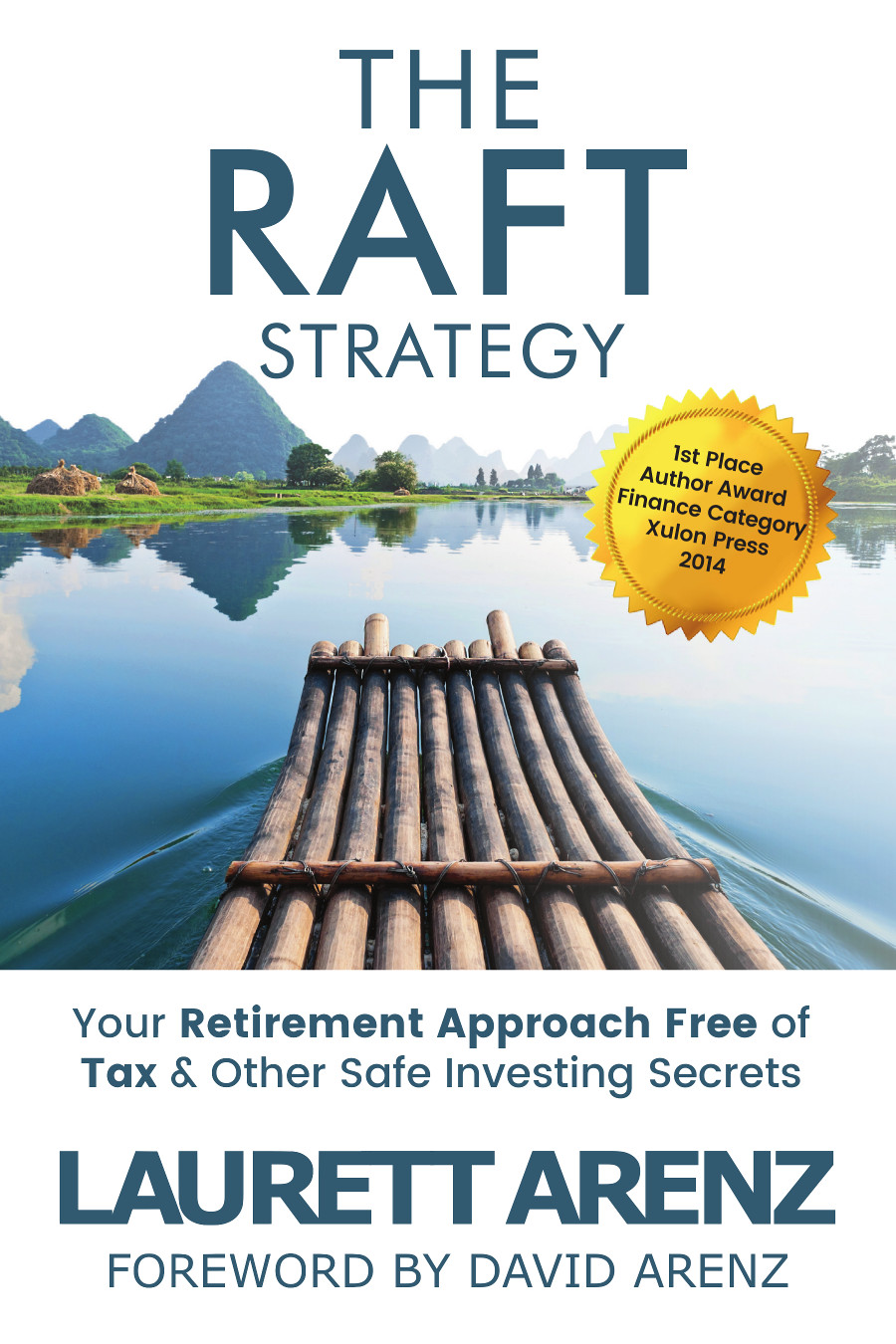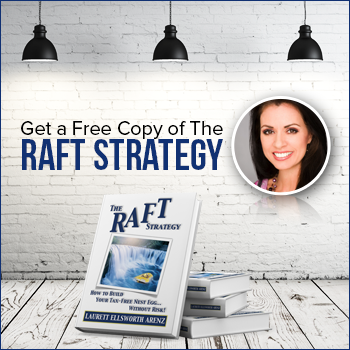About the Book: The RAFT Strategy
“RAFT”…Retirement Approach Free of Tax
With a rising debt load in the United States and historically low tax rates, the possibility that we will see an increase in income tax rates in the future looms large. This puts those investors who only use tax deductible retirement vehicles as a source of retirement funding at great risk of paying higher income tax rates during their retirement years. Sometimes quite literally the million-dollar question is “Do you want to risk paying higher taxes during retirement?”
 While it may be the right choice for some, is using a tax deductible retirement vehicle like a 401(k) or an IRA the best option for your retirement? With a tax deductible account, you receive a tax deduction now, but is it really a tax deduction, or is it just a tax deferral?
While it may be the right choice for some, is using a tax deductible retirement vehicle like a 401(k) or an IRA the best option for your retirement? With a tax deductible account, you receive a tax deduction now, but is it really a tax deduction, or is it just a tax deferral?
If you contribute $15,000 annually to your tax deductible account, and you are in a 20% tax bracket, you will have a tax savings of $3,000. Assuming a consistent deposit of $15,000 over a period of 25 years, at a growth rate of 8%, you would have a value of $1,200,000. Assuming you take $60,000 (5%) out for income annually upon retirement, and you are in a tax bracket of 30%– you now owe $18,000 in taxes. So, you took a tax deduction of $15,000 during your working years, but it cost you $18,000 in taxes during your retirement years, when you needed as much spendable income as possible.
Did you really save money by deferring your taxes, or did you just defer them and pay them at a higher rate? If you believe tax rates will be higher than they are today because of a growing national debt, unfunded Social Security and Medicare liabilities, and an increase in other entitlement programs, then the need for a tax-free account is more crucial than ever before.
There are three ways to gain tax free income: municipal bonds, Roth IRAs, and permanent insurance contracts.
Municipal bonds are most appropriate for those in the highest tax brackets. Typically the gains on these types of investments are lower than most investors need for their portfolios.
Roth IRAs can be a great retirement option for tax-free income, but there are limits on contributions and regulations on distributions. In order to be eligible to contribute up to the limit, a married couple who files jointly needs an annual adjusted gross income of $183,000 or less, and a single filer needs $116,000 or less. Also, the IRS restricts how much you can contribute annually and requires earned income in order to make a contribution (unless you are an unemployed spouse). Regular distributions are also penalized before age 59 ½ and those over 70 ½ are required to take distributions.
Permanent life insurance can be divided into several different categories, including whole life and universal life. Each carries particular advantages for investors. Whole life policies offer guaranteed rates of return which are based on the current interest rates. Whole life can be useful in letting policyholders know exactly how much money they will have accumulated in 20 years, but it is also the most rigid of all the options and can involve a lot of costs.
Equity-indexed universal life insurance has two options for investing. The investor can choose annually either the fixed interest rate option, or follow a specific index, such as the S&P 500. When the investor chooses to follow an index, their account will participate in the gains of that index, yet when the index falls, the investor will never lose any money. Universal Life is one of the most affordable and flexible policies available. The income potential from these types of policies is greater than Whole Life policies.
Tax-free income is generated from these life insurance products by obtaining loans on the policy’s cash value. These types of loans work similarly to home equity loans in the sense that the investor does not pay income tax on the money borrowed. Unlike a home equity loan, though, the investor does not have to pay back the loan balance. This is pertinent to tax codes 7702 and 72(e).
The need to start diversifying away from taxes is now. With the national debt continuing to grow, social programs in jeopardy and all time low tax rates, taxes will need to go up to pay down the national debt. Tax deferred programs are helping Uncle Sams retirement and hurting an investors net spendable dollar during retirement years. All investors want more disposable income. This can be accomplished by cutting the IRS out of your retirement.
Unfortunately most investors have learned how easy it is to lose 20%, 30%, 50% or more of their investment portfolio. There is a safe, no cost solution.
HEROS Strategies will show you how you can have of the upside potential of the stock market up to an annual cap and have no risk of market losses.
Never lose principle due to index losses. A Win-Win strategy that may credit you in a bull or bear stock market. – Capture upside stock market potential up to an annual cap without risk. Receive positive gains from the positive years of the market
- Receive principle protection in the negative years of the market
- Position your funds to take advantage of market rebounds
- Consider a tax free 1035 exchange
So if you are tired of the roller coaster ride of market fluctuation this site will show you how you can have the upside potential of the stock market AND have no risk of market losses.
You don’t have to take risks with your investments to get a great return. Choose the right account for your situation with the right company and get the strongest financial guarantees.



